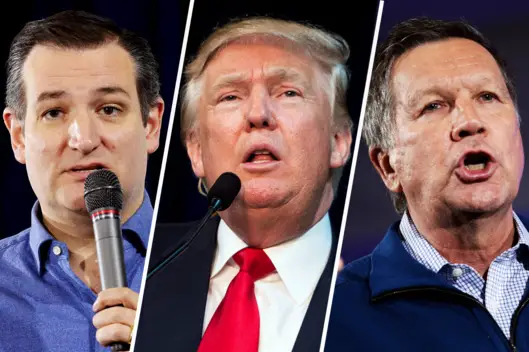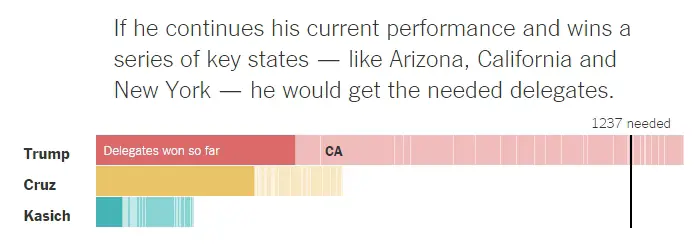Now that we’re a couple days past the fallout of Tuesday’s primary votes, where do we stand in terms of the delegate race on the Republican side? We’ll get the Democratic race a little later. According to analysis from the New York Times, Rubio’s exit now theoretically clears a path for Donald Trump to obtain the 1,237 delegates needed to clinch the Republican nomination, and thus avoid a contested convention.
This analysis runs contrary to some analysts, who felt that without a knockout win in Ohio, Trump would almost be assured of falling short in the delegate count. That could still very well happen, however, the Times lays out a reasonable argument that without major changes in the level of Trump’s support, he’s still in a good position for the nomination.
Report from the New York Times:
Donald J. Trump’s series of victories on Tuesday extended his delegate lead and forced Senator Marco Rubio of Florida out of the presidential race. Mr. Trump’s path to winning enough delegates to secure the Republican nomination is not assured, but he is in a strong position.
Here are some ways the Republican nominating contest could unfold. Try adjusting the sliders to see how the outcomes change. Each line in the chart represents one possible outcome.
If Mr. Trump maintains his current level of support in the remaining races, he would almost certainly secure the nomination.
After Tuesday’s contests, no other candidate retains a real chance of capturing the delegates required to win the nomination outright. Mr. Rubio dropped out, Gov. John Kasich of Ohio is too far behind, and Senator Ted Cruz of Texas would need to win the vast majority of the remaining delegates — a near impossibility.
But Mr. Trump still needs to win most of the remaining delegates to avoid a contested convention.
If he continues his current performance and wins a series of key states — like Arizona, California and New York — he would get the needed delegates.
The Times’ analysis hinges on Trump taking California, which seems a likely probability right now. The latest poll from about a week ago gives Trump a 16 point lead. The only caveat, however, is that California does not vote until June 7th, so there are many states that vote in the meantime and the dynamics of the race could change between now and then.
Basically what it boils down to is that unless Ted Cruz or John Kasich can start eroding some of Trump’s support, their presence in the race alone isn’t enough to prevent Trump from reaching the 1,237 delegate threshold for the nomination.
We’ll start to see in the coming weeks how the vote share divides in a three-man race coming up on Tuesday, March 22nd, with voting in Arizona and Utah.
Donate Now to Support Election Central
- Help defend independent journalism
- Directly support this website and our efforts


